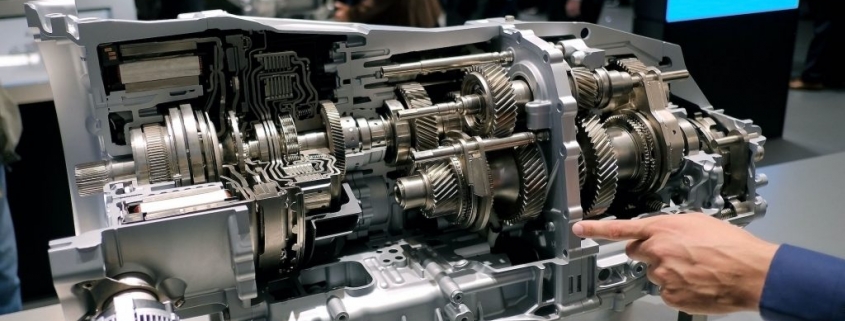Why Are Cars With Automatic Transmissions Quicker Than Those With Manual Ones?
If you were to buy a Porsche 911, would buy the automatic version with the quick-shifted PDK, or would you opt for the good ‘ol seven-speed manual transmission? Of course, any real car enthusiast would likely choose to row their own gears, but they would be remiss to ignore the fact that the automatic version is actually quicker. But why?
Power loss doesn’t have that much to do with it
Before dual-clutch transmissions were a thing, many cars equipped with automatic transmissions were slower than their manual-transmission counterparts. For years, many people figured that it was due to the power loss that you get when the horsepower routes from the engine and through the drivetrain. However, according to Jason Cammisa from Hagerty, that wasn’t necessarily the reason they were slower.
In a recent video, Cammisa points out that the computer controls that govern the operation of many automatic transmissions from the past would lock up the torque converter most of the time. This would effectively eliminate a lot of “slush” from the gearbox. This also led to no power loss between shifts, which meant that automatic transmissions started to catch up to their manual transmission counterparts over time. However, they still weren’t as quick off the line.
The dual-clutch transmission evened the playing field
Eventually, manufacturers started to incorporate the dual-clutch transmission (DCT). This quick-shifting transmission utilizes two different clutches – one on the even gears and one on the odd gears – which basically made shifting between the gears much faster. According to Cammisa, the DCT also allowed for “clutch dumps,” or the act of revving the engine to a high rpm in order to accelerate rapidly.
In a traditional automatic transmission, you can’t really do a clutch dump because the car would essentially bog off the line and suffer from some initial power loss. But since the DCT acts more like a manual transmission, it can do manual transmission-type things.
“DCTs can perform spectacularly abusive redline clutch dumps for launches just as quick as a manual. And since their larger clutches have more thermal capacity than the small bands and clutches in traditional automatics, they can often shift with no interruption in power. Suddenly, automatics were pulling slightly ahead,” Cammisa says in the video.
Gear ratios also play a large factor

Cammisa then goes on to use the aforementioned Porsche 911 Carrera S as an example. He notes that the car can go from 0 to 60 mph in just 4.0 seconds when equipped with a manual transmission and 3.2 seconds with an automatic transmission. Why is the automatic version so much quicker?
According to Camissa, the main culprit for the difference in acceleration times is that “Porsche geared the manual to lose.” More specifically, Porsche actually geared first and second gear to be quicker on the automatic than on the manual transmission. In fact, the automatic’s first gear is 30% shorter than the manual counterpart and its second gear is 43% shorter. That means that the automatic version of the 911 is much quicker off the line, resulting in a quicker 0 to 60 mph time.
In conclusion, automatics are getting better, but what makes them quicker than most manual transmission cars is the fact that the computers controlling them can optimize the gearing and shifting to be more economical and even more sporty. Of course, it also helps if they’re manufactured with closer gear ratios is the case for the Porsche 911 and many other cars in the current market.
RELATED: Is a Manual Transmission More Reliable?
The post Why Are Cars With Automatic Transmissions Quicker Than Those With Manual Ones? appeared first on MotorBiscuit.







